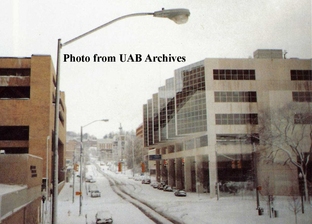If you are from Alabama, this kind of weather does not surprise you. You are, or should be, used to it by now. Yet, this doesn’t make it any less frustrating. As I left for class on many mornings this past month, I would look up in the sky at that bright, blazing ball of orange and ask, “Why? Don’t you have some other place to be? Don’t you want to take a break? Do you ever get tired of scorching this Alabama earth?” I get no answer and am not interested in Googling global warming. So, I get in my car, turn that blessed A/C as high as it will go, and look forward to my sweaty trek to class.

The storm hit on March 12–13. The Weather Channel and Wikipedia called it the “Superstorm of 1993,” and “The Storm of the Century,” and with good reason. It was as strong as a Category 3 hurricane. Countrywide, the storm created almost $9 billion in damages and an estimated 300 fatalities.
All 67 counties in Alabama saw snowfall. The most snow was reported at Walnut Grove—it received 20 inches, and some drifts were as deep as 6 feet. Fallen power lines resulted in some people going without power for almost two weeks, and a rare occurrence called “thunder snow” (thunder accompanied by purple lightning) was reported in several counties throughout the state.
Because the storm was in March, people did not expect the snowfall to be as bad as it was. As a result, many were not prepared with emergency supply kits when the storm hit. Temperatures in Alabama fluctuated vastly over the course of three days from March 11–14. One day before the storm hit, temperatures were in the 70s. By March 14 the temperature had dropped as low as 2 degrees in some areas. By the end of the week, temperatures were back in the 60s. If that ain’t Alabama for ya, I don’t know what is.
I’m not saying I want to see another “Storm of the Century,” but I don’t think a little sweater weather is too much to ask for, either.

 RSS Feed
RSS Feed